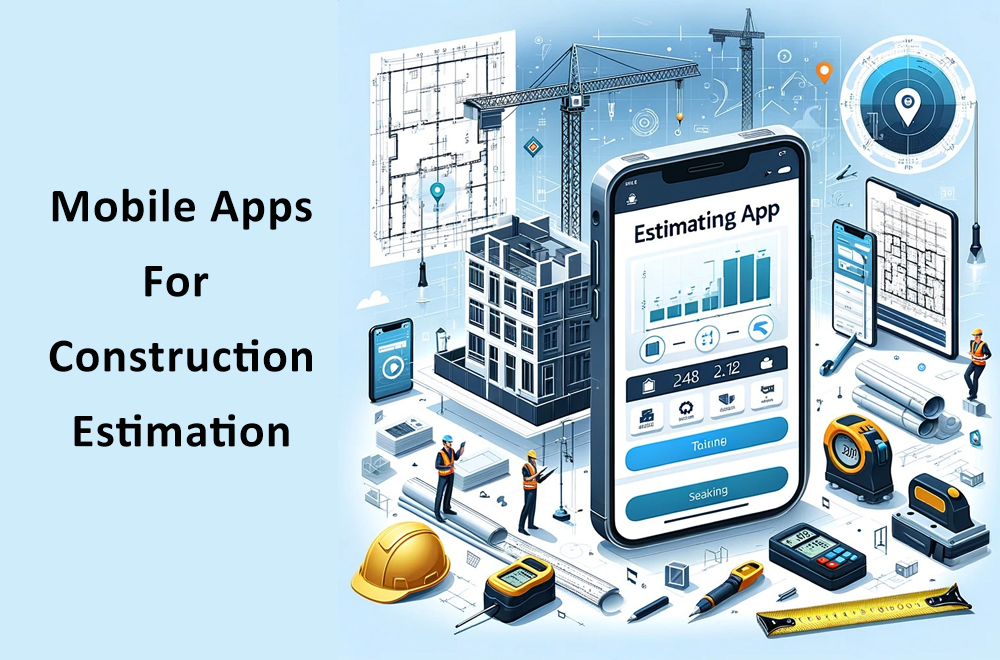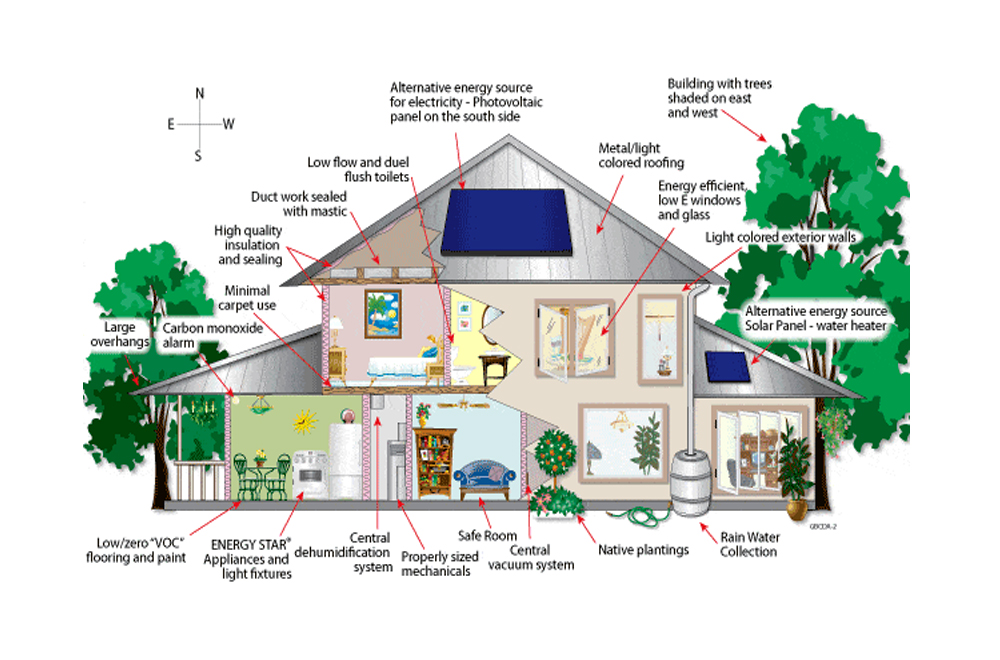In the dynamic and ever-evolving realm of construction, precision is key. From the inception of a project idea to its completion, pivotal stages determine success. Among these, construction estimating, takeoffs, and the bidding process stand tall as critical junctures. In this comprehensive guide, we will delve into these vital aspects of the construction industry, unraveling their significance, exploring innovative techniques, and understanding how technology is revolutionizing the way we approach these crucial tasks.
Imagine building a house without an accurate blueprint or understanding the required materials and labor. It sounds like a recipe for disaster, right? Construction estimating, takeoffs, and bidding are the building blocks that ensure your project is founded on solid ground.
Before we embark on a journey through the intricacies of construction estimating, let’s take a moment to appreciate the growth and vibrancy of the construction industry. The construction industry is thriving, with a projected compound annual growth rate (CAGR) of 8.8% in 2022. This growth isn’t limited to brick and mortar; it extends to innovative practices, tools, and approaches transforming how we build our future.
Table of Contents
ToggleConstruction Estimating
Understanding Estimating Accuracy Levels
The first step in the construction estimating process is to understand the different levels of accuracy. These levels are like milestones on the road to a successful project:
- Order of Magnitude: This initial, rough estimate provides a broad overview of project costs. It’s based on high-level information and is often used for early project feasibility assessments.
- Intermediate Estimate: As you progress, this estimate offers more detail. It’s typically based on historical data and is useful for refining the project scope.
- Preliminary Estimate: You’ll have detailed project information at this stage, and the estimate is becoming more accurate. It’s used for budget planning and initial decision-making. You can hire an estimating firm to get preliminary estimating services for informed decision making in controlling budget even without detailed drawings.
- Substantive Estimate: This robust estimate is used for detailed project planning and financing. It’s grounded in precise data and provides a strong foundation for your project.
- Definitive Estimate: The final, highly accurate estimate that you can rely on for finalizing project costs.
Different Estimating Approaches
In construction estimating, a one-size-fits-all approach doesn’t exist. There are various techniques, each tailored to specific project requirements. Let’s explore a few of these:
Parametric Estimating
Parametric estimating is all about data and formulas. It involves determining project measurements and dimensions, typically in the early design stages. The formula, E_parametric = A_old / P_old x P_curr, is used to calculate estimates. Parametric estimation yields two types of results:
- Deterministic: This provides a single expected cost and time estimate.
- Probabilistic: It offers multiple estimates with optimistic, pessimistic, and most likely scenarios. Probabilistic estimation often involves creating a probability density curve to visualize various cost and time scenarios.
Analogous Estimating
When detailed project information is lacking, analogous estimating comes to the rescue. This technique relies on historical data, making it perfect for providing a rough estimate even when short on specifics.
Assembly Estimating
Assembling costs are based on, well, assemblies! These assemblies are combinations of materials and components designed for specific purposes. Assembly estimating simplifies the estimation process by automatically adding components like gang boxes, poles, cover plates, and wires to your estimate. Benefits include maintaining cost databases, reducing order quantities, auto-updating costs, and creating assembly libraries.
The Role of Estimating Software
In the age of technology, construction estimating software plays a pivotal role in streamlining and enhancing the estimating process. These tools aren’t just about making things easier; they’re about making them more accurate. Whether handling complex mathematical calculations, organizing data, or offering user-friendly interfaces, estimating software is a game-changer for the modern construction professional.
Plinth Area Calculation
When you’re estimating costs for a project, understanding the concept of the plinth area is crucial. The plinth area refers to the external dimensions of building walls, typically 10–20% larger than the carpet area. When calculating the plinth area, it’s important to exclude certain features like balconies, lofts, shaft areas, domes, turrets, cornices, and box louvers. In essence, it’s the sum of the carpet and wall areas, and getting it right is vital for precise cost estimation.
Now, let’s dive deeper into the bidding process, explore ethical considerations, understand how technology reshapes the industry, and discover the top tools and strategies for successful bidding. Stay tuned as we continue our journey through construction estimating, takeoffs, and bidding!
The Bidding Process
The Difference Between Quotes and Estimates
Before we embark on the intricacies of the bidding process, it’s vital to understand the fundamental difference between two terms that are often used interchangeably but serve different purposes:
- Quotes: A quote is a detailed breakdown of project costs. It’s typically a legally binding document that contractors provide to clients. Once accepted by the client, a quote forms the basis for the project’s financial terms. Quotes often have a validity period that depends on price fluctuations, usually around one month.
- Estimates: An estimate, on the other hand, is an approximation of project expenses. It’s not legally binding and is primarily used for internal planning and initial budgeting. Estimates have a more extended validity, often ranging from 30 to 90 days.
Common Pitfalls to Avoid in Bidding
Bidding can be tricky terrain to navigate, and there are some common pitfalls that contractors should be vigilant about:
- Inaccurate Takeoffs: Failing to perform precise material takeoffs can lead to incorrect construction costs, which can be a significant issue during bidding. Ensuring that you have a clear understanding of the quantities required is fundamental.
- Skipping Site Visits: Every construction site is unique. Ignoring a site visit can lead to inaccurate estimates, as you might overlook site-specific factors that can significantly impact costs. A thorough site visit is invaluable.
The Art of Creating a Winning Bid
Creating a winning bid is both a science and an art. It involves more than just listing direct and indirect costs. Here are some critical steps to keep in mind:
- Choose the Right Projects: Bid selectively on projects that align with your expertise and available resources. Not every project is a good fit for your company, so be discerning.
- Review Project Specifications: Thoroughly review project specifications and drawings. Discrepancies or omissions can lead to costly issues, so pay close attention to the details.
- Accurate Material Takeoffs: Accurate material takeoffs are essential to ordering the right quantities. Material shortages or overages can lead to delays and budget overruns.
- Calculate All Costs: When creating a bid, consider all costs, including labor, materials, and overhead expenses. Creating a comprehensive project budget is crucial.
- Implement a Job Cost Recording System: To ensure financial stability throughout the project, consider implementing a job cost recording system. This helps you track expenses and ensure that the project stays on budget.
Contract Types in the Bidding Process
Contracts are the legal framework that governs the relationship between contractors and clients. In the bidding process, you may encounter different types of contracts. Here’s a glimpse of some common ones:
- Lump Sum Contract: In a lump sum contract, the contractor agrees to perform the work for a fixed price. This is a straightforward contract type and is often used for smaller projects.
- Cost Plus Contract: Cost plus contracts involve reimbursement for costs incurred during the project and an additional fee or percentage of profit. This type of contract provides more flexibility and transparency.
- Unit Price Contract: Unit price contracts are based on unit rates for specific work items. The contractor is paid based on the quantity of work completed.
- Guaranteed Maximum Price (GMP) Contract: In a GMP contract, the contractor provides a maximum price for the project, and any costs incurred beyond this amount are the contractor’s responsibility.
Project Delivery Methods
With a clear understanding of the bidding process and contract types, it’s time to explore the various project delivery methods that can influence how construction projects are managed and executed.
Design-Bid-Build
Design-Bid-Build, often referred to as the traditional method, involves three distinct phases: design, bid, and build. In this approach, an architect designs the project, proposals are submitted and evaluated, and construction begins under the architect’s supervision. It’s a linear process that is widely used for various types of projects.
Construction Manager at Risk (CMAR)
The Construction Manager at Risk (CMAR) method involves the construction manager taking on significant risk. They are responsible for delivering the project within a guaranteed maximum price (GMP). If costs exceed the GMP, the CMAR organization is financially responsible for covering the overages.
Integrated Project Delivery (IPD)
Integrated Project Delivery (IPD) is all about collaboration. It involves selecting an architect, contractor, and subcontractors under a single contract, promoting collaboration and efficiency, especially for complex projects.
Procurement Strategies
The procurement strategy used for awarding a project can significantly impact the outcome. Here are a few procurement strategies often employed:
- Best Value Source: This strategy selects the best-qualified contractor based on various factors, including experience, past performance, and technical qualifications.
- Low Bid: The low bid strategy is commonly used in government and public projects. The project is awarded to the lowest bidder, ensuring cost-effective budget utilization.
- Negotiated: Negotiated procurement involves direct discussions and negotiations with contractors. It allows for a more collaborative approach to project selection.
- Direct Select: In this approach, the client directly selects a contractor based on their expertise and qualifications for the specific project.
As we continue our journey through construction takeoff estimating, and the bidding process, these insights into contract types and project delivery methods will become increasingly valuable.
Ethical Considerations in Bidding
Unethical Practices in Construction Bidding
While the construction industry is generally characterized by integrity and professionalism, there are, unfortunately, instances of unethical practices. Being aware of these corrupt practices is the first step towards preventing them. However, it’s best to get expert bid management services as many busy contractors and builders rely on this to win projects without failures. Here are a few unethical practices in construction bidding:
- Bid Shopping: Bid shopping involves disclosing lower bids from subcontractors to other subcontractors. This practice can reduce quality and dissatisfaction among clients, as subcontractors may compromise quality to match the lowest bid.
- Bid Peddling: Bid peddling, conversely, is the practice of subcontractors offering a lower bid than the original winner, which is unethical and anti-competitive. It can create confusion and conflicts within the project.
- Bid Rigging: Bid rigging is a severe offense where competing bidders collude to determine the project winner. This anti-competitive practice can involve bid rotation, bid suppression, complementary bidding, and phantom bidding, which is illegal.
Legal Measures to Prevent Unethical Practices
To combat unethical practices, various legal measures have been put in place, including:
- The Sherman Antitrust Act: This federal law promotes fair competition and prohibits practices like bid rigging that reduce competition in the marketplace. Violating this act can lead to significant fines and penalties.
- State Regulations: Many U.S. states have implemented their own regulations to prevent bid shopping. For instance, California and Washington State have amended their laws to discourage this practice.
Consequences of Bid Rigging
Bid rigging is not just unethical; it’s also illegal. Contractors found guilty of bid rigging can face severe consequences, including:
- Heavy Fines: Contractors involved in bid rigging can face substantial fines that can significantly impact their finances.
- Imprisonment: In some cases, individuals involved in bid rigging may face imprisonment, which can have long-lasting personal and professional consequences.
- Legal Repercussions: The legal ramifications of bid rigging can lead to the loss of professional licenses and damage to a contractor’s reputation.
Understanding the legal and ethical boundaries of the bidding process is critical for every construction professional. By adhering to ethical standards and avoiding unlawful practices, you protect your reputation and contribute to a fair and competitive industry.
Selecting the Right Estimating and Bidding Software
In an industry that’s increasingly reliant on technology, selecting the right estimating and bidding software is a strategic decision that can significantly impact your efficiency and success. Let’s explore the steps for vendor selection and some of the latest trends in construction estimating software.
Steps for Vendor Selection
Selecting the right software vendor is a crucial decision. Here are the steps to make an informed choice:
- Define Requirements: Start by creating a checklist of software requirements tailored to your specific needs. Understand what you need from the software, whether it’s accurate takeoffs, cost estimation, or project management capabilities.
- Distribute Requirements: Compare potential vendors based on your requirements and eliminate those not meeting your criteria. This step helps you narrow down your options.
- Justify Vendor Selection: Shortlist vendors based on their responses to your requirements. Determine if you need additional modules or a new solution altogether.
- Prove Suitability: If you’re implementing a new solution, prepare for demonstrations, analyze use cases, and conduct proofs of concept to ensure it fits your company’s needs.
- Rank Vendors: After assessing the vendors, rank them based on demo points, requirements, and the total cost of ownership.
- Negotiate Contracts: Meet with the selected vendor to discuss contract terms and conditions. Seek legal advice if needed to ensure the contract meets your expectations.
- Sign Contract: Once all the details are ironed out and both parties are satisfied, sign the contract. This formalizes the agreement and sets the stage for implementation.
Trends in Construction Estimating Software
The construction industry is evolving, and so is the software that supports it. Here are some of the latest trends in construction estimating software:
- Big Data and Analytics: The industry is increasingly relying on data-driven decision-making. The market for Big Data analytics in construction is expected to grow significantly, helping contractors with risk forecasting, collaboration, and project efficiency.
- Artificial Intelligence (AI) Estimating: AI is making its mark in construction estimating, reducing errors, and improving data extraction from BIM models. The AI estimating market is projected to grow at a remarkable CAGR.
- Visual Estimating: Visual estimating is replacing manual quantity calculations with 3D models and automated processes. This innovation simplifies the estimating process and enhances accuracy.
- Benefits of Cloud Technology: Cloud technology offers secure storage for important bid proposal documents. With unlimited storage capacity, cloud-based applications provide pre-built proposal templates and secure client communication.
Selecting the right software that aligns with these trends can give you a competitive edge and streamline your estimating and bidding processes. Integrating these technologies enhances accuracy and provides better collaboration and transparency in the construction industry.
BIM and Technology in Construction
The Role of Building Information Modeling (BIM)
Building Information Modeling, often called BIM, is a game-changer in the construction industry. BIM is a digital representation of a building’s physical and functional characteristics. It allows construction professionals to plan, design, construct, and manage buildings and infrastructure efficiently and accurately. The role of BIM in construction includes:
- Precise Takeoffs: BIM provides a detailed 3D model of the building, allowing for more accurate material and quantity takeoffs.
- Cost Estimation: BIM enables more precise cost estimation by considering every project element, from structural components to finishes.
- Design Coordination: BIM aids in coordinating design elements, reducing conflicts and errors during construction.
- Project Visualization: BIM provides a visual representation of the project, aiding in client communication and understanding.
Utilizing Big Data Analytics
The construction industry is experiencing a significant shift towards data-driven decision-making. Big Data analytics is becoming increasingly essential for contractors. Critical aspects of utilizing Big Data analytics include:
- Risk Forecasting: Big Data analytics help identify and mitigate potential risks in construction projects. Contractors can make more informed decisions by analyzing historical data and current project parameters.
- Collaboration: Big Data fosters collaboration by providing a common platform for stakeholders to access project data and make real-time decisions. This enhances project efficiency.
- Market Insights: Big Data analytics can provide insights into market trends, helping contractors decide which projects to bid on.
The Growth of AI in Estimating
Artificial intelligence (AI) is making waves in the construction estimating process. AI is not here to replace human expertise but to enhance it. Here’s how AI is transforming construction estimating:
- Error Reduction: AI helps reduce errors in estimating by automating repetitive tasks and cross-referencing data from various sources.
- Data Extraction from BIM Models: AI can extract data directly from BIM models, streamlining the takeoff process and ensuring greater accuracy.
- Scenario Analysis: AI allows for scenario analysis, providing contractors with multiple cost and time estimates based on different variables.
- Efficiency: AI tools are improving estimating efficiency by automating calculations, freeing up estimators to focus on more complex aspects of the job.
Top Tools and Strategies for Successful Bidding
In the competitive bidding world, having the right tools and strategies can make all the difference. Here are some top tools and strategies to consider for successful bidding:
Leveraging Analytics for Project Opportunities
Analytics play a critical role in identifying project opportunities. By leveraging analytics tools, you can:
- Track New Projects: Utilize analytics and solutions to track new projects posted by company owners in your area. This ensures you’re among the first to know about potential bidding opportunities.
- Evaluate Project Viability: Use analytics to assess project viability, considering factors like project size, location, and expertise.
Cloud-Based Solutions for Document Management
Document management is a vital aspect of bidding, and cloud-based solutions offer a host of advantages:
- Secure Storage: Cloud technology provides secure storage for important bid proposal documents, protecting your critical files.
- Easy Retrieval: Cloud solutions offer easy document retrieval from any location, streamlining communication with clients and stakeholders.
- Unlimited Storage Capacity: The unlimited storage capacity of the cloud ensures that you will have enough space for your project documents.
Digital Technologies for Efficiency
Digital technologies are transforming efficiency in the bidding process.
- Reduce Travel: With digital tools, you can significantly reduce the need for time-consuming travel, making the bidding process more efficient.
- Simplify Communication: Digital solutions streamline communication with clients and subcontractors, ensuring everyone is on the same page.
Comparison Tools for Software Selection
Selecting the right software for estimating and bidding is crucial. Comparison tools can be invaluable:
- Evaluate Features: Comparison tools allow you to evaluate the features and capabilities of different software solutions, ensuring that you choose the one that best suits your needs.
- Consider Pricing: Price is an essential factor in software selection. Comparison tools help you assess the cost-effectiveness of different options.
The Future of Construction Estimating and Bidding
The future of construction estimating and bidding is exciting and promising. Technology will continue to play a pivotal role, offering tools and solutions that enhance accuracy, efficiency, and collaboration. Building Information Modeling (BIM) will become standard practice, reducing errors and fostering better design coordination.
Big Data analytics will provide deeper insights into market trends and project risks, giving contractors a competitive edge. Artificial Intelligence (AI) will further streamline the estimating process, reducing human errors and providing scenario analysis for more informed decision-making.
In an increasingly competitive construction industry, staying updated with the latest technology trends and ethical considerations will be essential for success. The construction industry is poised for growth, and those who embrace innovation and maintain high ethical standards will thrive in the evolving landscape.
References
For further reading and exploration of the topics covered in this guide, consider these authoritative sources:
- The American Institute of Architects (AIA)
- The Associated General Contractors of America (AGC)
- The Construction Specification Institute (CSI)
- The Construction Industry Institute (CII)
- Dodge Data & Analytics
These organizations and resources offer valuable insights, research, and guidance on construction estimating, bidding, and industry trends. Exploring their publications and materials will further enhance your understanding of this dynamic field.
Thank you for joining us on this journey through the world of construction estimating, takeoffs, and bidding. We wish you success and excellence in all your construction endeavors.






